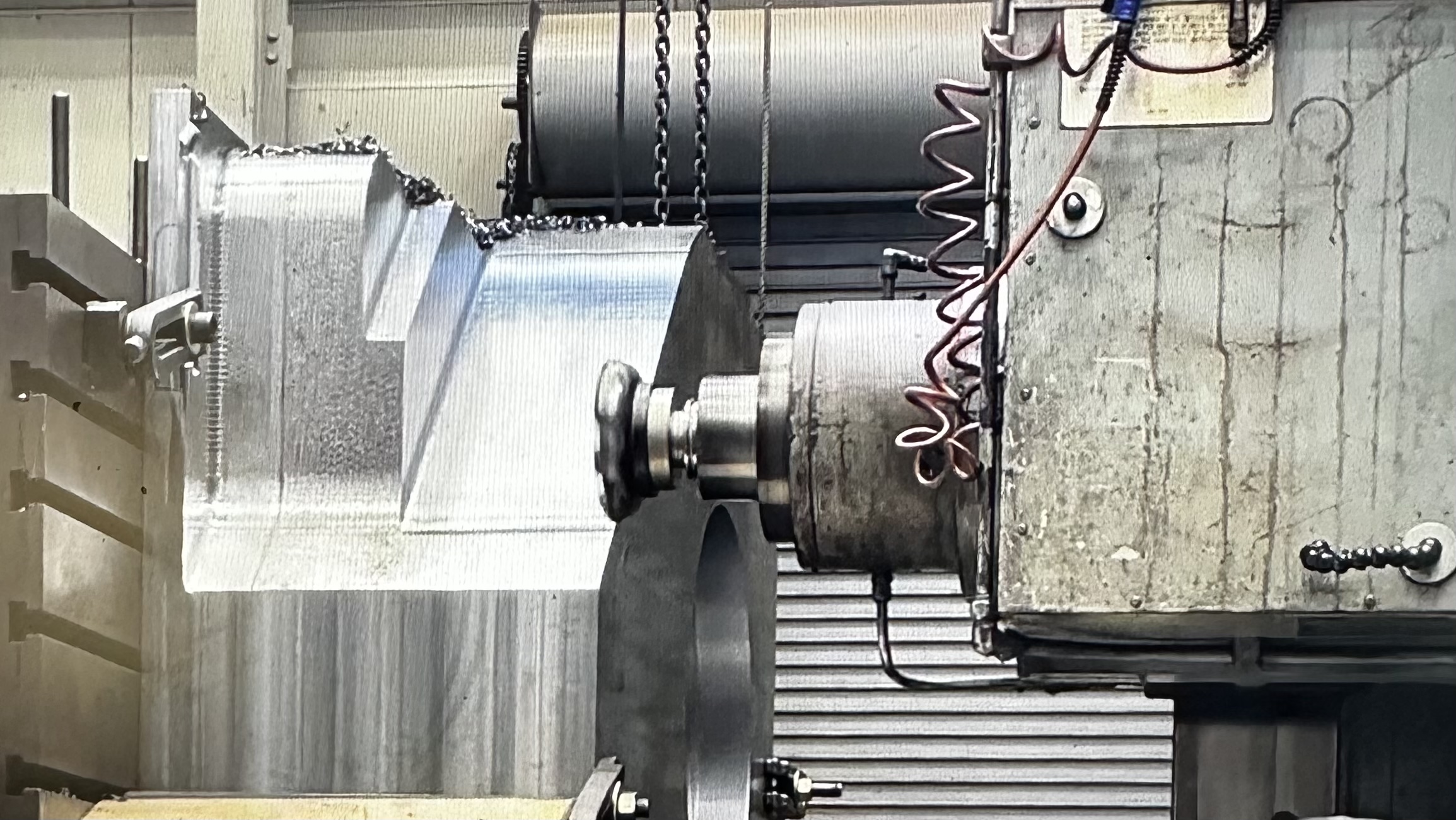Mar 24, 2025
“Think of it like modeling a block of clay,” said Joseph Hardwick, Machine Tool Specialist at the Power Service Shops (PSS) in Muscle Shoals, Alabama. “Like an X-Acto knife would cut away at the excess clay, our machines do the same thing, cutting away excess material.”
Using a specialized software, the team at the PSS devised upwards of 40 tool paths necessary for machining the components slated to be installed at Wilson Lock. Machinists were challenged with implementing a new, innovative approach to the machining process – specifically for the pintle ball.
For the first time ever, the PSS implemented something called a roller burnishing tool to achieve the desired surface. Whereas most machining projects involve cutting and shaving only, this process brought the asset close to size, and the roller burnishing tool took it across the finish line. In the world of machining, close means .003 inches away from the desired shape. But instead of continuing to cut, their new method used a hardened wheel to compact the surface. Rather than cutting off the remainder, the team compacted the steel, making it harder and slicker than the old method.
Stan Swinney, a Machinist on the job, said, “I enjoyed the challenges these parts presented and the new technique of burnishing to achieve the perfect surface.”
Machining is one of the final steps in the process of completing the Wilson lock gate repair. Next, the lock will be dewatered, the gates jacked up, and the old pintle casting will be pulled out to make way for the new component.
This gate hinge may be hidden beneath the surface of the water, but its importance doesn’t go unnoticed.
To Dakodah Rice, another Machinist on the project, it’s not just another job. It’s a story.
“I’m proud to take part in the repair,” he said. “And whenever we drive over the bridge, I’m able to tell my kids that I helped to fix it.”

